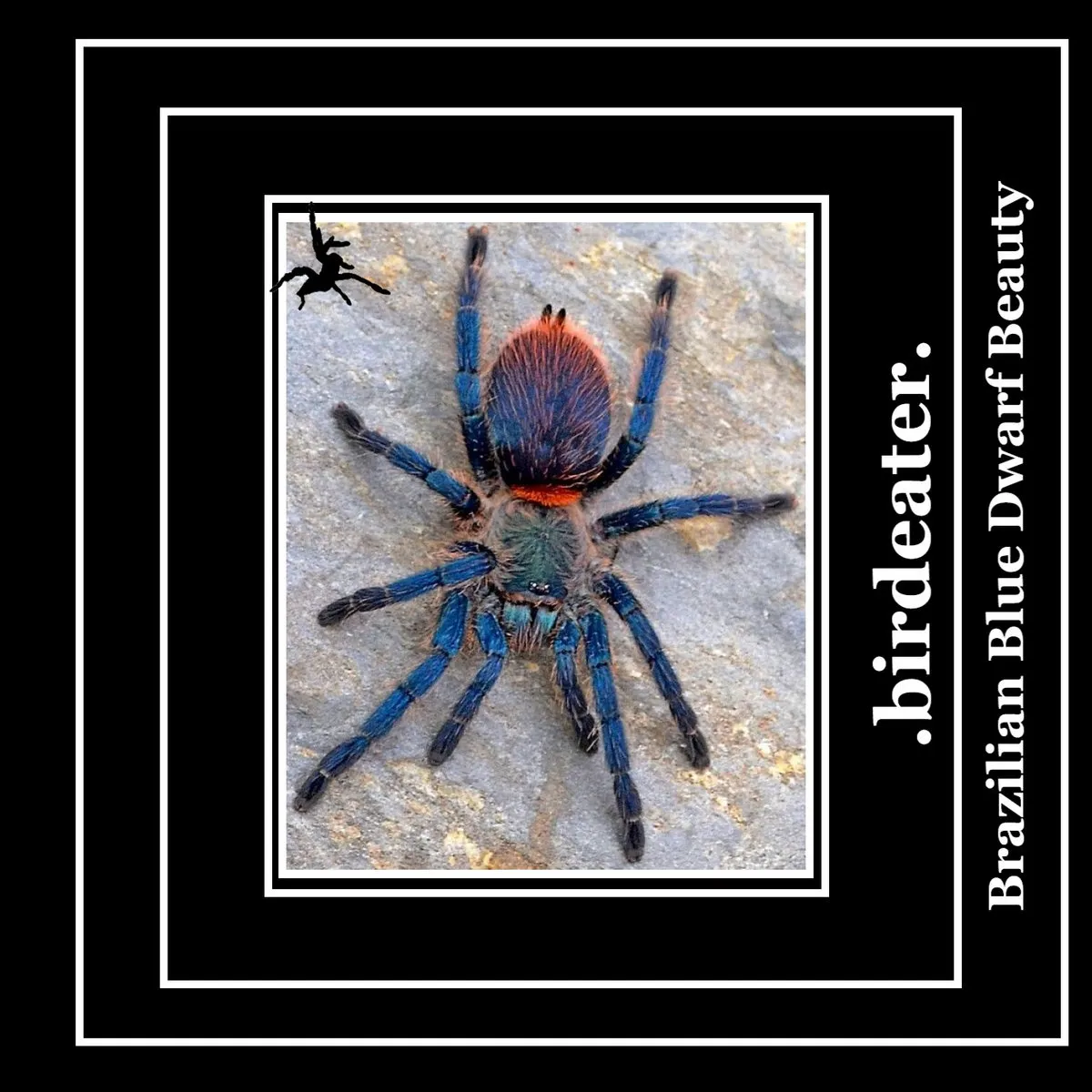Brazilian Blue Dwarf Tarantula Care Top 5 Tips
The Brazilian Blue Dwarf Tarantula, a captivating arachnid, is gaining popularity among tarantula enthusiasts. Known for its vibrant blue coloration and relatively small size, this species offers a unique pet experience. However, proper care is essential to ensure the health and longevity of your Brazilian Blue Dwarf Tarantula. This guide provides five essential tips to help you provide the best possible environment for your pet tarantula, ensuring it thrives in your care. Understanding these key aspects will allow you to enjoy the beauty and fascinating behavior of this amazing creature, while keeping it safe and happy. Whether you’re a beginner or experienced tarantula keeper, these tips will help you succeed in your tarantula-keeping journey.
Habitat Setup
Creating the right habitat is the cornerstone of successful Brazilian Blue Dwarf Tarantula care. A well-designed enclosure mimics their natural environment and provides the necessary conditions for them to thrive. This involves careful consideration of the enclosure’s size, substrate, and the provision of appropriate decor. Setting up the perfect habitat is crucial for the health and well-being of your tarantula. A good habitat will not only keep the tarantula safe but will also reduce stress and allow you to easily observe your pet and maintain it properly. The choice of enclosure and its furnishings directly impacts the tarantula’s comfort and overall health.
Enclosure Size and Type
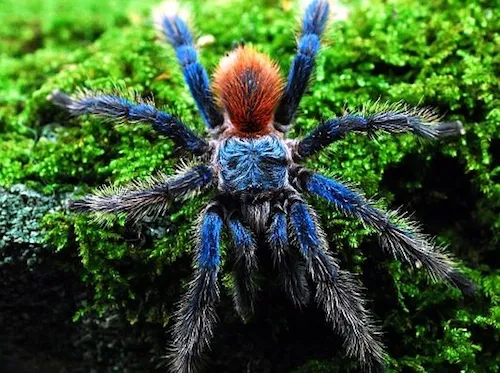
The size and type of enclosure are fundamental to a happy tarantula. A 5-10 gallon terrarium is generally suitable for an adult Brazilian Blue Dwarf Tarantula. Choose an enclosure with secure ventilation and a secure lid to prevent escapes. Glass or acrylic enclosures are both viable options, with clear sides allowing for easy observation. The enclosure should be escape-proof, as these tarantulas are skilled climbers, and any gaps could lead to loss of your pet. Furthermore, a good enclosure should be easy to clean and maintain, making it a practical choice for both you and the tarantula. A well-chosen enclosure helps to maintain proper humidity and temperature.
Substrate and Decor
The substrate forms the base of the habitat and is essential for maintaining humidity and providing a natural environment. A mixture of peat moss, coconut fiber, and a small amount of vermiculite is an excellent choice. The substrate should be deep enough for the tarantula to burrow, typically 2-4 inches. Decorate the enclosure with hides, such as cork bark or artificial plants, to provide shelter and security. These hiding places will help the tarantula feel safe and reduce stress. Adding a shallow water dish and a few sturdy climbing branches can further enrich the environment, encouraging natural behaviors and making the enclosure more interesting for your pet. The right substrate and decor make a significant difference in the tarantula’s well-being, creating a comfortable and stimulating environment.
Temperature and Humidity
Maintaining the correct temperature and humidity levels is crucial for the health and well-being of your Brazilian Blue Dwarf Tarantula. These factors directly impact their ability to molt, eat, and thrive. Monitoring and regulating these environmental conditions requires a hygrometer and thermometer to ensure accuracy. Creating a balanced environment can prevent health problems, such as failed molts and dehydration. Ensuring the right climate in the enclosure mirrors the conditions of their natural habitat, providing your tarantula with the best chance of a long and healthy life. This involves understanding the specifics of temperature and humidity requirements and making the necessary adjustments to maintain the perfect environment.
Ideal Temperature Range
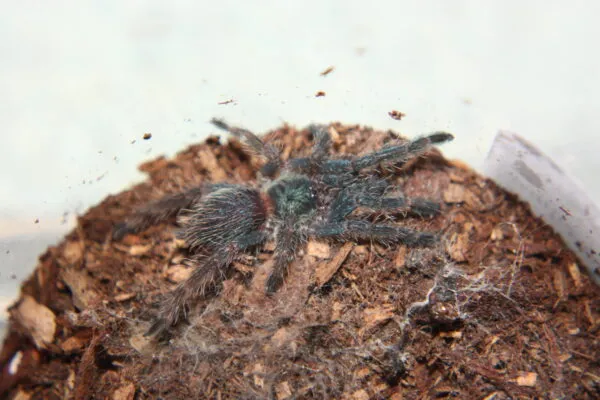
The ideal temperature range for a Brazilian Blue Dwarf Tarantula is between 75°F and 85°F (24°C and 29°C). Use a heat lamp or a heat mat placed on the side of the enclosure, ensuring it doesn’t directly contact the substrate. Avoid placing the heat source directly above the enclosure, as this can lead to overheating and dehydration. Regular temperature checks are essential to ensure the environment remains within the optimal range. Proper temperature regulation helps the tarantula’s metabolism and overall health, promoting a healthy appetite and successful molting. The key is to maintain a consistent temperature that mimics their native environment, which promotes natural behaviors.
Maintaining Humidity Levels
Humidity is essential for the tarantula’s health, especially during molting. The ideal humidity level should be between 70-80%. Achieve this by misting the enclosure with dechlorinated water a few times a week. The frequency of misting depends on the ventilation and the substrate used. Ensure the substrate is moist but not waterlogged. A hygrometer is essential to monitor the humidity levels accurately. Insufficient humidity can lead to failed molts, which are often fatal. Regularly monitoring and adjusting humidity is an essential care requirement for your Brazilian Blue Dwarf Tarantula. Providing a proper humidity level will help your tarantula thrive and experience healthy molts.
Feeding Your Tarantula
Feeding your Brazilian Blue Dwarf Tarantula correctly ensures it receives the necessary nutrients for growth and health. Providing the right food and the proper feeding schedule contributes significantly to their well-being. Understanding their dietary needs and adjusting the feeding plan as they grow is critical. It’s important to offer food appropriate to their size and to avoid overfeeding, which can lead to obesity and other health problems. A proper feeding regimen supports the tarantula’s overall vitality, allowing you to enjoy watching it grow and thrive. Food also provides the essential nutrients to maintain the vibrant blue coloration that makes this tarantula so unique.
Types of Food
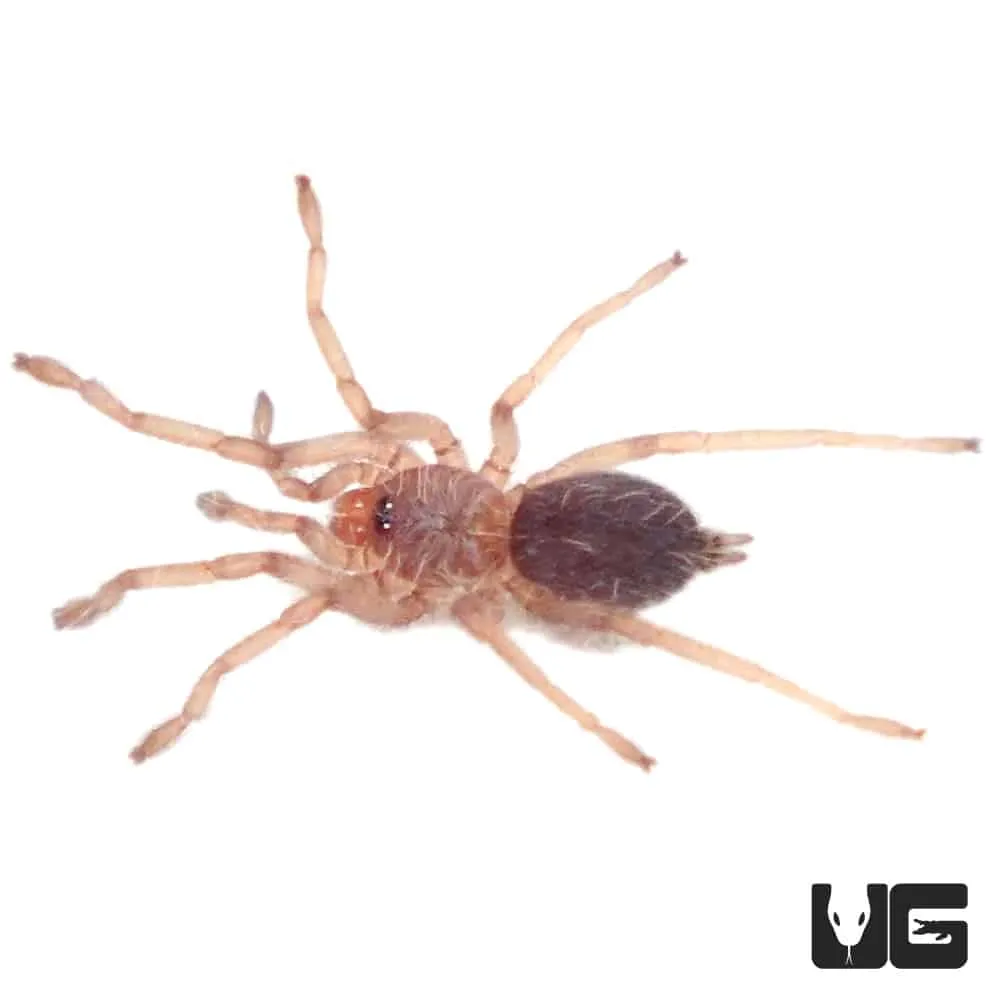
The Brazilian Blue Dwarf Tarantula primarily feeds on insects. Suitable food options include crickets, mealworms, and roaches. Ensure the insects are gut-loaded with nutritious food before feeding them to your tarantula. Gut-loading the insects enriches them with vitamins and minerals, thereby passing these nutrients to your tarantula. The size of the prey should be appropriate for the size of the tarantula. Usually, the prey should be no larger than the tarantula’s body. Remove any uneaten prey within 24 hours to prevent stress and potential harm to the tarantula. Variety in the diet can help ensure your tarantula receives a balanced diet. Ensure that insects are sourced from a reputable supplier to avoid introducing any parasites or harmful substances.
Feeding Frequency
The feeding frequency depends on the tarantula’s age and size. Spiderlings and juveniles should be fed 2-3 times a week. Adults can be fed once or twice a week. Adjust the feeding schedule based on the tarantula’s appetite and body condition. A well-fed tarantula will have a plump abdomen. During molting, the tarantula may refuse food; it is essential to leave it undisturbed during this period. It’s essential not to overfeed, as this can lead to health issues. Always monitor the tarantula’s behavior and adjust the feeding schedule as needed, ensuring it receives the right amount of food to stay healthy. The timing of feeding can also depend on the tarantula’s activity level and whether it is preparing to molt or has recently molted.
Watering and Hydration
Providing a clean water source is critical for keeping your Brazilian Blue Dwarf Tarantula hydrated. Water helps with molting, digestion, and overall health. Dehydration can be fatal to tarantulas, so fresh water should be available at all times. Monitoring the water source, ensuring it is clean and free from debris, is a part of the routine care needed to ensure your tarantula lives a long and healthy life. Understanding the importance of hydration will ensure the survival of your tarantula. The water source also maintains the humidity levels needed to help with molting and overall well-being. Providing a clean source is not only critical to your tarantula’s health, it also helps in maintaining the cleanliness of the enclosure.
Water Source
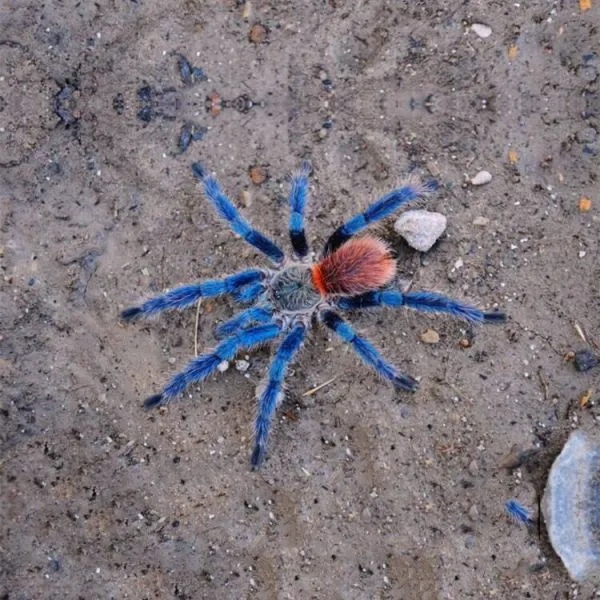
A shallow water dish is a must-have for a Brazilian Blue Dwarf Tarantula enclosure. Use a small, shallow dish to prevent drowning, as tarantulas can easily fall in. Always use dechlorinated water to avoid any harmful chemicals. Change the water frequently, ideally every 1-2 days, to keep it clean and fresh. The water dish should be easily accessible and located on the substrate. You can also provide water by lightly misting the enclosure. This helps to maintain humidity while providing drinking water. Ensure the dish is stable so it cannot be accidentally overturned. Clean water is crucial to their survival.
Watering Frequency
Provide fresh water daily, ensuring the dish is always full. Monitor the water levels, and refill as needed. Misting the enclosure 2-3 times a week, depending on the humidity levels, can also provide additional hydration. Adjust the watering frequency based on your enclosure’s ventilation and humidity. Always avoid over-misting, as this can cause the enclosure to become too humid, which may lead to mold and fungal growth. The correct balance is crucial for maintaining the tarantula’s health, so ensure that the water is clean and available, helping them thrive. Regular observation of the water dish and misting schedule will help the tarantula stay hydrated.
Handling and Interaction
While the Brazilian Blue Dwarf Tarantula is a beautiful and captivating pet, handling should be approached with caution. These tarantulas are venomous, although their venom is typically not life-threatening to humans. However, bites can be painful and may cause local reactions. Understanding safe handling practices and observing your tarantula’s behavior is paramount to ensure both your safety and the tarantula’s well-being. The best approach is usually to observe and appreciate the tarantula in its habitat and avoid unnecessary handling. Learning to read its behavior helps to minimize potential stress and handling incidents. This minimizes any chance of bites and protects both the tarantula and the handler.
Safe Handling Practices

If you must handle your Brazilian Blue Dwarf Tarantula, do so with extreme care. Always handle the tarantula over a soft surface, like a bed or a carpet, in case it falls. Avoid sudden movements and loud noises, as these can startle the tarantula. Never grab or squeeze the tarantula, as this can cause stress and defensive behavior. Always wash your hands before and after handling to prevent the spread of any potential contaminants. For beginners, handling is not usually recommended. Allowing the tarantula to crawl onto your hand voluntarily can be a way to handle them, but only if the tarantula is comfortable. When handling, keep the tarantula close to the ground or soft surface to minimize the risk of injury from falls.
Observing Behavior
Observing the behavior of your Brazilian Blue Dwarf Tarantula is an essential part of responsible pet ownership. Learn to recognize signs of stress, such as defensive postures, rapid movements, or loss of appetite. This will help you understand your tarantula’s well-being and adjust your care accordingly. A healthy tarantula will typically be active, eat regularly, and show interest in its surroundings. Molting behavior includes a loss of appetite and the tarantula spending more time in its hide. Being aware of these different aspects will help you understand your pet’s health and happiness. Regular observation of the tarantula’s behavior will help you identify any potential health problems or stress, allowing you to provide the care it needs to thrive.
